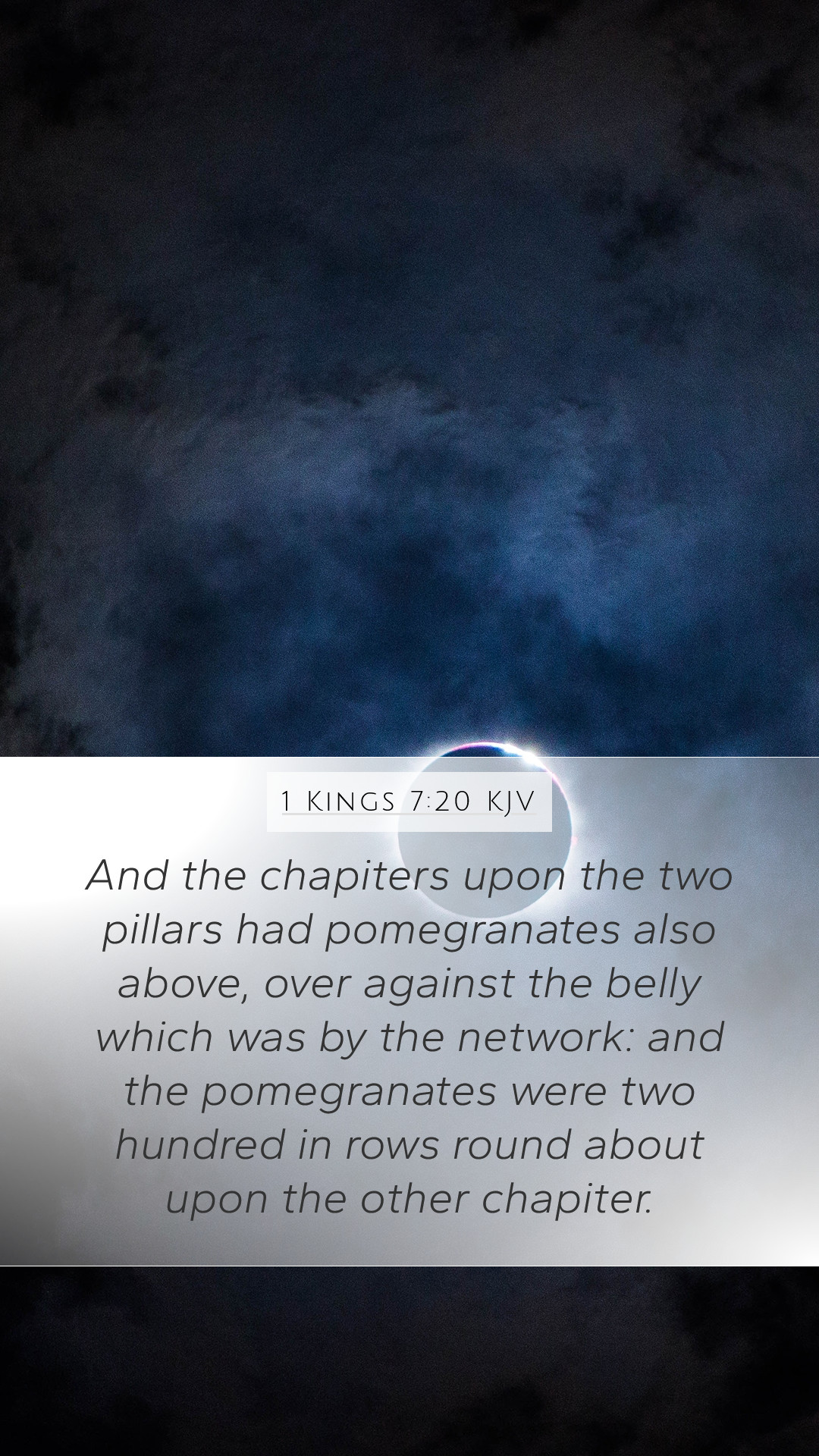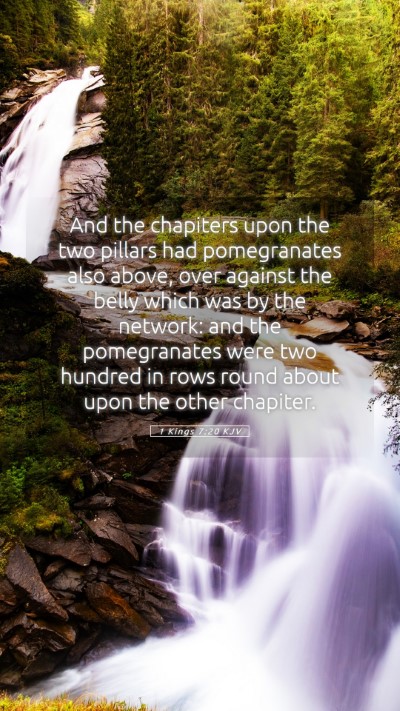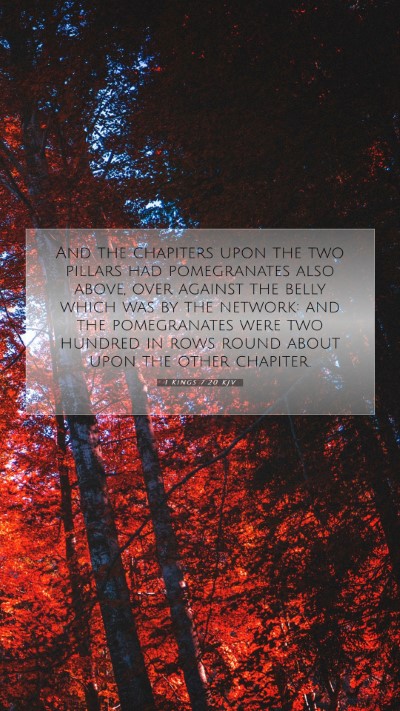Bible Verse Commentary: 1 Kings 7:20
Verse: “And the two pillars were in the porch of the temple; and the heights of one pillar was eighteen cubits, and the chapiter upon it was of brass: and the height of the chapiter three cubits; and the wreathen work, and pomegranates upon the chapiter round about, all of brass. And like unto these had the second pillar with wreathen work.” (1 Kings 7:20)
Understanding 1 Kings 7:20
This verse describes the two pillars that were placed in front of Solomon's temple, known as Jachin and Boaz. The significance of these pillars has been interpreted in various ways throughout scripture. Below, we provide insights based on esteemed public domain commentaries, synthesizing their explanations for a comprehensive understanding.
Summary of Insights
- Symbolism of the Pillars: Matthew Henry notes that the two pillars represent strength and stability. Jachin is traditionally interpreted as "He will establish," while Boaz signifies "In Him is strength." Together, they symbolize God's support and the foundation upon which His people stand.
- Dimensions and Materials: Albert Barnes elaborates on the construction details, highlighting that the pillars were constructed of brass which was a testament to their beauty and strength. The height of 18 cubits signifies greatness, representing the majesty of the temple.
- Pomegranate Decorations: Adam Clarke emphasizes the significance of the pomegranates in the ornamentation atop the pillars. The pomegranate, often seen as a symbol of righteousness and fruitfulness in the Bible, indicates the blessings that come from God's law and the fertility of the people serving Him.
- Architectural Significance: The design and placement of the pillars are reflective of the architectural advances during Solomon's reign. They were not merely structural components, but served as a dramatic visual statement about the glory of God and His dwelling among His people, as detailed in Henry's account.
- Cultural Context: Understanding the historical context, these pillars were influenced by surrounding cultures, particularly the Canaanites, but were redeployed to honor Yahweh. This cultural mix, as Barnes points out, illustrates how God can redeem and use elements from the world around us for His glory.
Applications and Reflections
Applying the teachings from 1 Kings 7:20 can enhance one’s Bible study insights. Believers can reflect on the meaning of the pillars as reminders of God's establishment and strength in their lives. Just as the temple stood as a central point of worship, so too can our lives become temples of the Holy Spirit, demonstrating the sacredness of service and dedication to God.
Additional Cross References
- 2 Chronicles 3:15-17 – Further explanation of the pillars’ significance and description.
- 1 Kings 6:23-35 – Details on Solomon's craftsmanship in the temple.
- Jeremiah 52:21 – Historical context regarding pillars during the Babylonian destruction.
Conclusion
The exploration of 1 Kings 7:20 reveals layers of meaning concerning divine establishment, strength, artistic expression, and cultural significance. Engaging in Bible verse commentary promotes a richer understanding of Scripture and encourages deeper personal application. For those involved in Bible study groups or seeking online Bible study resources, this verse serves as a powerful illustration of God's presence manifested through physical structures meant for worship and praise.


